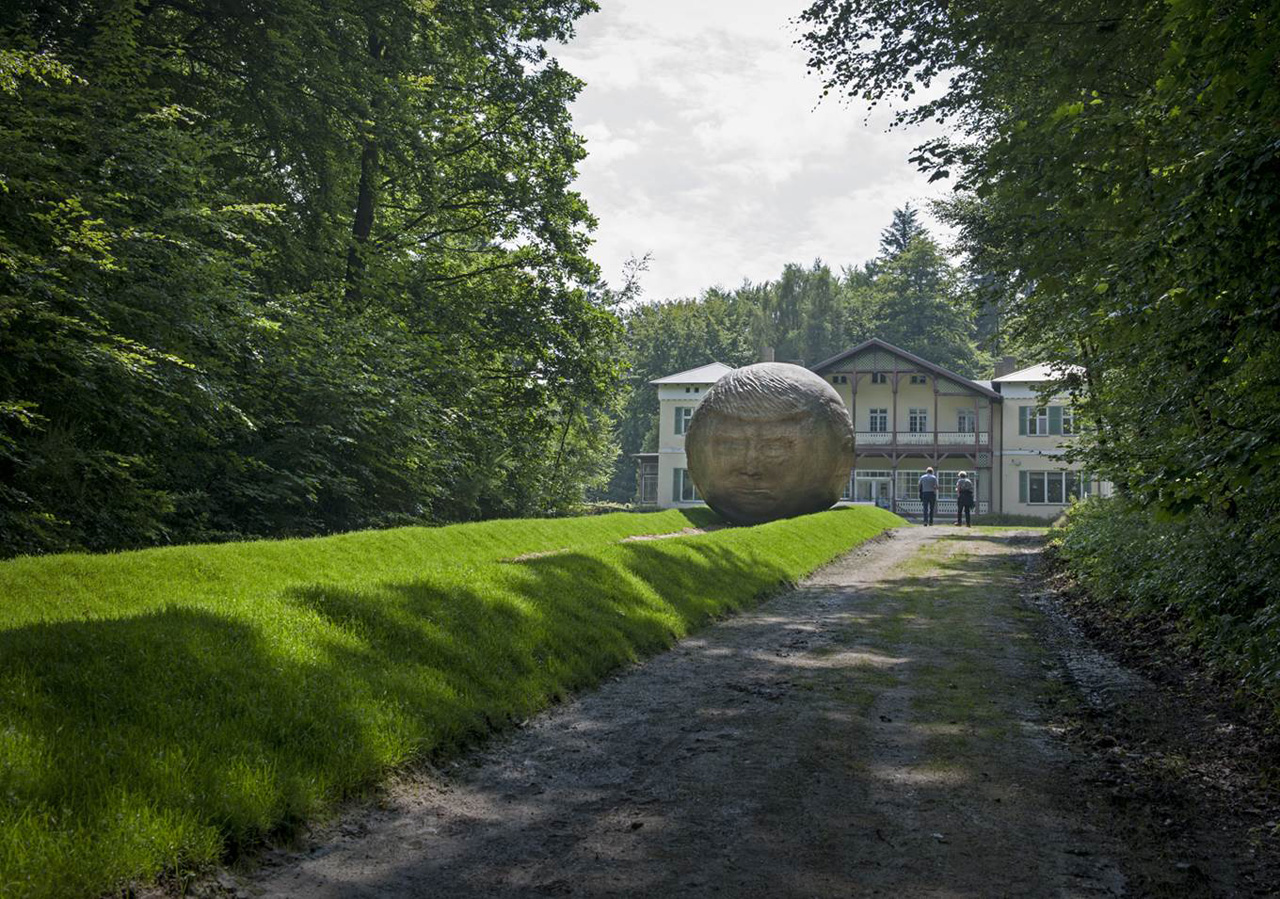News feed
“Well, it was twofold,” Callum Morton says, explaining of the intention that drove the creation of his new public sculpture, Monument #32 Helter Shelter. “I wanted to pose the question as to whether people were comfortable taking shelter from him, inside this version of hell, but also there’s the literal idea that that’s about all it’s good for.
“It’s a pretty literal work,” Morton, a Montreal-born and Melbourne-based artist, concedes of his unnerving piece of minor architecture, akin in scale to a bus shelter. A concave half of the shelter provides space for viewers to do just that – seek respite from the elements, while being engulfed in flames. The other, outward facing half bears the unmistakable likeness of President Donald Trump – his eyes narrowed in their default leer, his pompadour impossibly coiffed, his skin an incandescent shade of Cheeto dust orange.
The precise shade was extracted from a selection of photos of the President’s singular visage, albeit one heightened to emphasise the contrast between the defining features of the upper half of his face: the lacquered hair, the pallid skin and the fleshy white bags encasing his eyes. The work is made of polystyrene carved by computer numerical control using a computer generated model derived from the countless images available of Trump’s head, later sprayed with a hand applied polyurethane before being spray painted and clear coated to protect it. “He’s a P.T. Barnum, snake oil salesman and so I wanted it to hover on the edge of freak show,” Morton says of the work, which doubles as the terrifying inverse of the jovial theme park entrance to Luna Park situated on the opposite side of the harbour.
The work is one of three large-scale, site-specific interventions commissioned as part of Sydney Contemporary at Barangaroo in anticipation of the main event, Australasia’s largest and perhaps its most celebrated art fair taking place over four days this week from September 13-16 at Carriageworks. Morton says that the work evolved from reflecting on the context of using the contentious Barangaroo precinct to house a public artwork, as well as his recent interests in “a type of agitprop theatre that belongs in part to the temporary and exaggerated aesthetic of the theme park, the protest march, the parade float and also to the architecture of bus shelters, ferry stops, public toilets and so on.”
Morton, Head Professor of Fine Art at Monash University, has long explored the relationship between public and private spaces, and by extension, the articulation of interior and exterior worlds. Before arriving at the idea of a shelter as a piece of “anti-architecture”, Morton says he proposed a number of works to the curators. “Some reflected specifically on the local contest around the redevelopment of Millers Point and in particular the loss of public housing. Indeed, I have been working on a project to do with the Sirius Building in the Rocks, a brilliant Brutalist public housing complex designed in the 70s, that is sadly proposed for sale and demolition by the current state government to make way for private apartments.”

In this way, it’s inadvertently fitting that Morton should have settled on Trump as an unlikely muse, a kind of globally recognised cipher for relentless development no matter the human cost, given the space that the work now inhabits. “Trump is the real-estate president, perhaps the apotheosis of the neo-liberal project and Barangaroo is all about real estate,” Morton says of the reasons for recreating Trump’s likeness in a local context. “Trump said of the Billy Bush scandal, ‘It wasn’t me’, meaning literally that he wanted us to believe that people edited it to put words in his mouth, that he didn’t say it. Narcissists play with truth all the time and are very good at contesting the truth with a lie because they believe the truths that are convenient to them not universal or actual ones. In the same way, then, this caricature isn’t Trump at all; he’s just not there.”
It’s not the first time that Morton has appropriated Trump’s exaggerated likeness in a public work that interrogates the value of its setting. Last year, Morton devised a sculptural commission for the Art Centre Silkeborg Bad in Denmark comprised of a series of outdoor works that used “special effects, surprise tactics and the ur-architecture of the theme park” to underscore the site’s history as a health facility, a refugee camp and a bunkered site of Nazi occupation. The centrepiece, Sisyphus, a rolling boulder with Trump’s engorged likeness embedded into its surface was condemned to roll back and forth on the same track, and invoked the trajectory of its titular myth in much the same way that the contemporary news cycle appears to.
While Morton is content to leave interpretation of the new work open to those who enjoy an audience with it, there can be little doubt that its endlessly divisive subject will continue to provoke a broad spectrum of responses. Asked what he imagines his typically outspoken muse would have to say of the work, Morton guesses that it “would fuel his narcissism and he’d secretly be flattered, but he’s also stuck in the ground, can’t speak or use Twitter and [his] brain’s on fire with empty thoughts, so my guess is he’d hate it.
“But as my 12-year-old daughter always says – ‘who cares!’”
Sydney Contemporary takes place September 13-16 at Carriageworks. The works at Barangaroo will remain on view until September 24. More information is available here.
Tile and cover image: Daniel Boud/Courtesy of the artist and Sydney Contemporary












